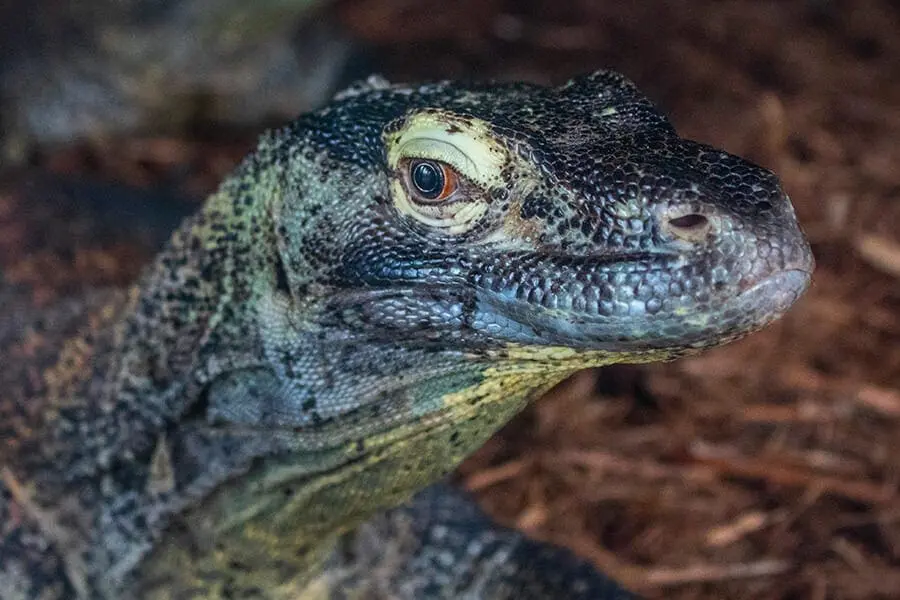

We will miss Sha-Sha’s intelligent, curious nature.
It is with great sadness that we report the death of Sha-Sha, our five-year-old female Komodo dragon.
Last Wednesday, Sha-Sha appeared lethargic and uninterested in food and had trouble breathing. The onset of these symptoms was sudden, and we transported her to the Harris Animal Care Center for an emergency exam.
Radiographs captured during the exam revealed extreme lung displacement and compression, likely caused by some sort of growth or mass. Because Komodo dragons’ skin is too thick for a sonogram, our only option was to open her body cavity to diagnose the issue and alleviate the pressure on her lungs.
When the surgery was performed that Friday, our veterinary staff discovered diseased ovarian follicles that were leaking yolk material. Yolk is not recognized as “self” by the body, and its presence in the body cavity triggers severe inflammation. This condition—which is relatively common among reptiles and birds—is known as coelomitis, and it is believed to be spontaneous in most cases.
We removed Sha-Sha’s ovaries and reproductive tracts to cure the infection. The surgery appeared to go well, and she had no problems recovering from anesthesia. We were cautiously optimistic about her condition.
Unfortunately, Sha-Sha was found deceased the following morning. Following a necropsy, it was determined she had suffered a hemorrhage; though we could not pinpoint the source of the hemorrhage, it was likely one of the excision sites.
“Sha-Sha was a highly intelligent, curious dragon,” said Tom Anderson, an animal care supervisor who worked with her. “She seemed to enjoy training, and she had a bit of a ‘stubborn streak’ that made her all the more endearing.”
Though we will miss Sha-Sha dearly, we take comfort in the knowledge that we did everything we could to save her life. If you’d like to honor Sha-Sha’s memory by protecting Komodo dragons in their natural range, consider making a financial contribution to Komodo Survival Program.